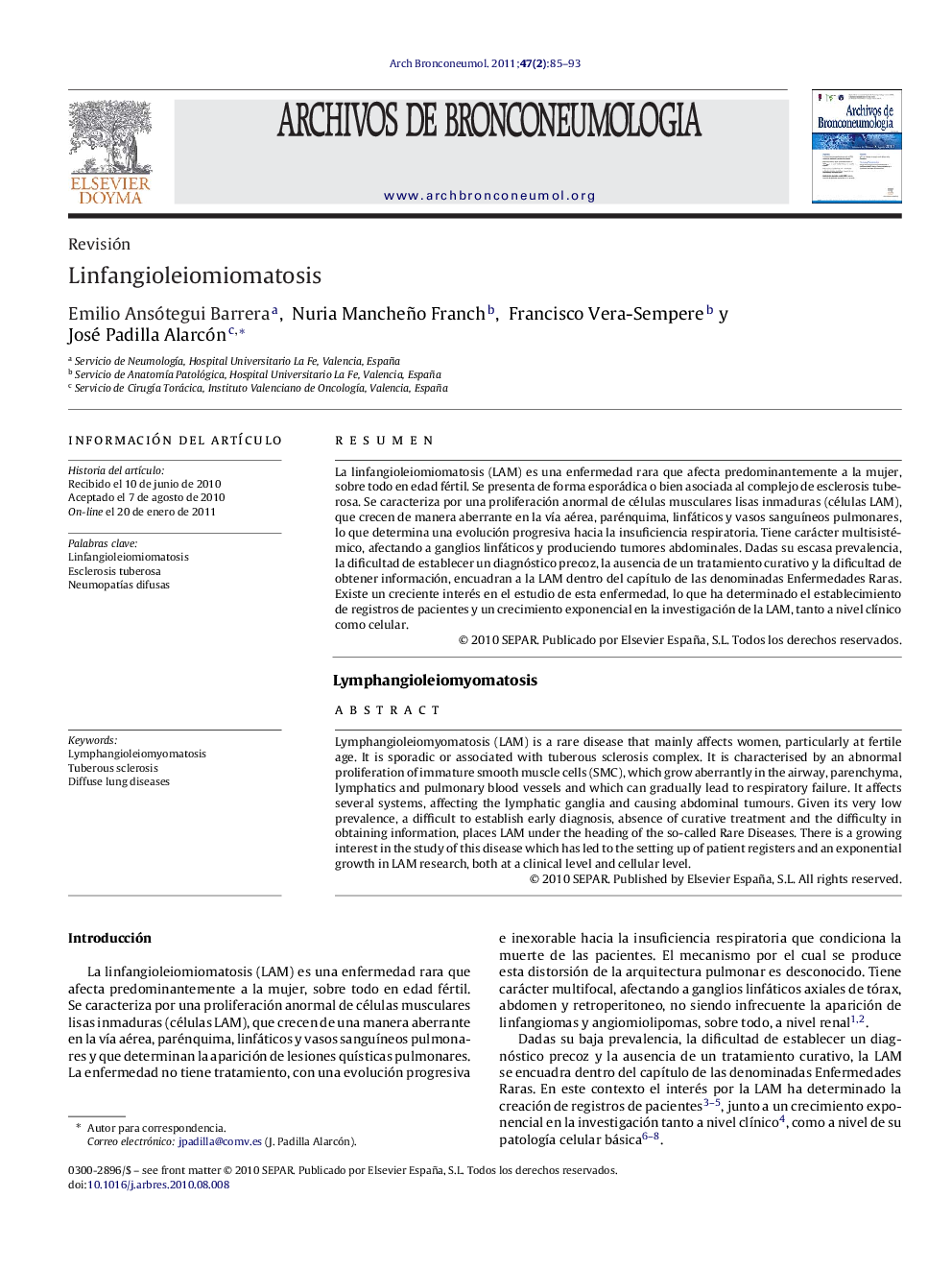| Article ID | Journal | Published Year | Pages | File Type |
|---|---|---|---|---|
| 4203583 | Archivos de Bronconeumología | 2011 | 9 Pages |
ResumenLa linfangioleiomiomatosis (LAM) es una enfermedad rara que afecta predominantemente a la mujer, sobre todo en edad fértil. Se presenta de forma esporádica o bien asociada al complejo de esclerosis tuberosa. Se caracteriza por una proliferación anormal de células musculares lisas inmaduras (células LAM), que crecen de manera aberrante en la vía aérea, parénquima, linfáticos y vasos sanguíneos pulmonares, lo que determina una evolución progresiva hacia la insuficiencia respiratoria. Tiene carácter multisistémico, afectando a ganglios linfáticos y produciendo tumores abdominales. Dadas su escasa prevalencia, la dificultad de establecer un diagnóstico precoz, la ausencia de un tratamiento curativo y la dificultad de obtener información, encuadran a la LAM dentro del capítulo de las denominadas Enfermedades Raras. Existe un creciente interés en el estudio de esta enfermedad, lo que ha determinado el establecimiento de registros de pacientes y un crecimiento exponencial en la investigación de la LAM, tanto a nivel clínico como celular.
Lymphangioleiomyomatosis (LAM) is a rare disease that mainly affects women, particularly at fertile age. It is sporadic or associated with tuberous sclerosis complex. It is characterised by an abnormal proliferation of immature smooth muscle cells (SMC), which grow aberrantly in the airway, parenchyma, lymphatics and pulmonary blood vessels and which can gradually lead to respiratory failure. It affects several systems, affecting the lymphatic ganglia and causing abdominal tumours. Given its very low prevalence, a difficult to establish early diagnosis, absence of curative treatment and the difficulty in obtaining information, places LAM under the heading of the so-called Rare Diseases. There is a growing interest in the study of this disease which has led to the setting up of patient registers and an exponential growth in LAM research, both at a clinical level and cellular level.
